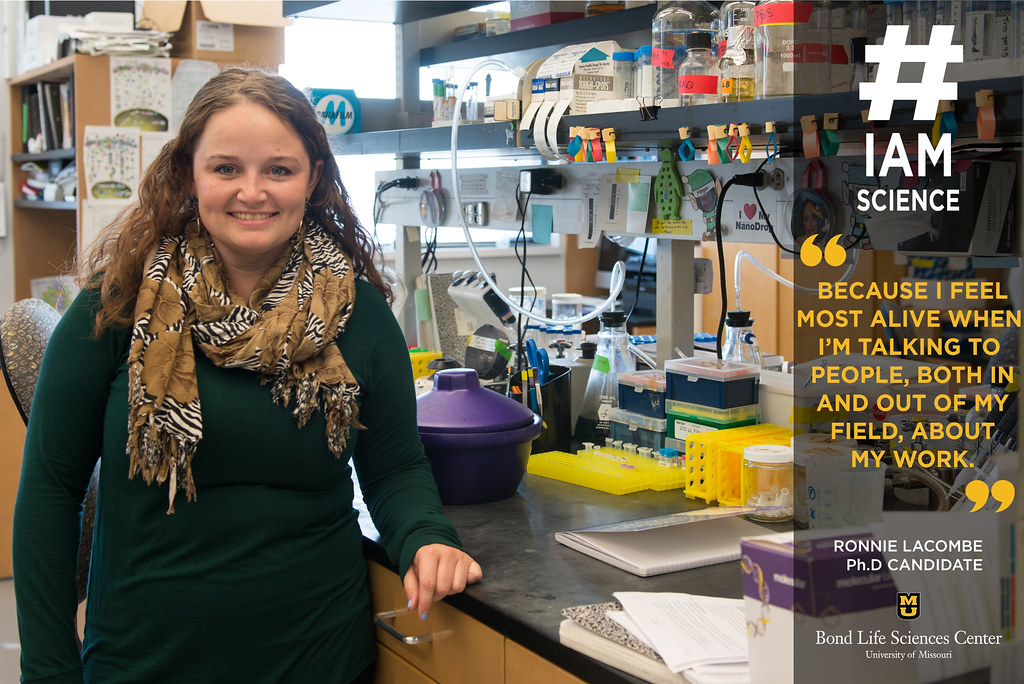
By Allison Scott | Bond LSC
“#IAmScience because I feel most alive when I’m talking to people, both in and out of my field, about my work.”
While other kids were playing with Legos and dolls, Ronnie LaCombe was exploring the world through a microscope.
Alongside her cousins, LaCombe used science at an early age as both a way of learning and for entertainment.
“I’ve always wanted to be a scientist,” LaCombe said. “In third grade I told everyone I was going to be planetologist — a scientist who studies planets. Although that didn’t pan out, I guess I always knew science was the path for me.”
Years later she’s working in D Cornelison’s lab studying protein interactions in cells of rhabdomyoscarcoma, a form of childhood cancer. Specifically, the fifth-year biological sciences Ph.D. candidate is trying to uncover why a protein that’s typically on the outside of a cell is located inside the nucleus in this form of cancer.
“I was looking at the cells and saw that this protein was in the nucleus and not on the outside,” LaCombe said. “At first, I thought it was fake. I followed up on it, and it ended up being something potentially significant.”
After noticing the unusual location of the protein in the cell, LaCombe and others in her lab looked into other species to see if it existed in them, too. When they saw the structure was the same in both dogs and mice they knew it meant something.
“We were jumping up and down once as we saw it was in three different species,” LaCombe said. “That validated what we had thought earlier about it being something significant and not a mistake.”
Now, the lab’s test is to figure out why the protein is there and if it’s functioning the in the same way it would if it were outside of the cell.
“Cells touch each other and talk to each other through the proteins on the outside of the cell,” LaCombe said. “We’re trying to figure out what the protein is doing since it’s in the nucleus rather than at the surface.”
At this point, they’re still looking into how this is possible and what it means for this type of cancer.
“The hope is to figure out a method that can be used in other forms of cancer,” LaCombe said.
Until that solution is discovered, LaCombe is happy to put the puzzle together piece-by-piece.
“Research is like one very long, often very difficult, puzzle that you don’t always have all the pieces to,” LaCombe said. “I enjoy the challenge, though, and the difficulty of it makes solving the puzzle even more satisfying.”

